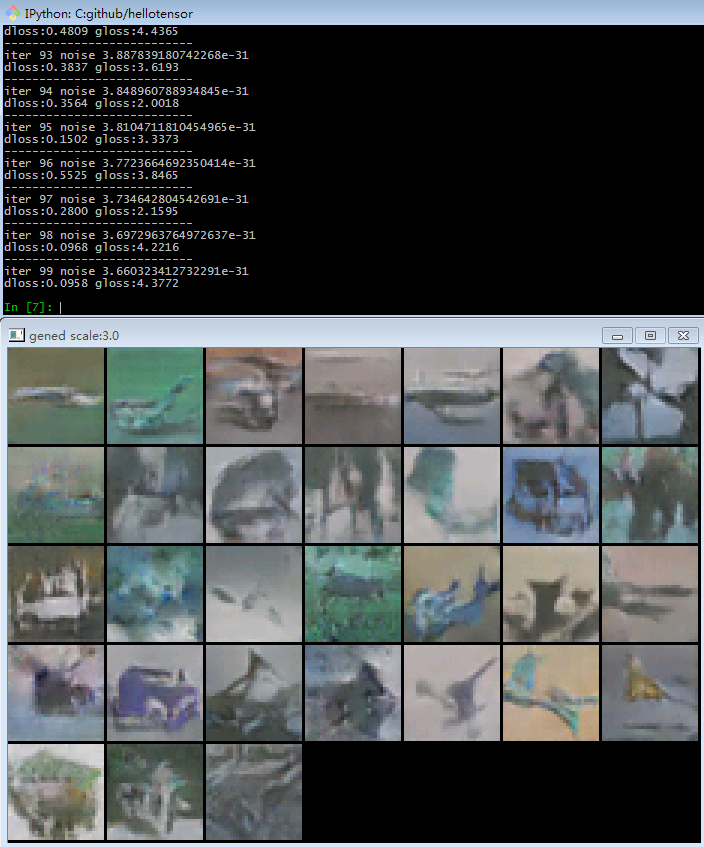The CORRECT and PERFORMANT way to implement GAN in Keras.
This is the Tensorflow version, here's another guy who wrote the theano version: https://github.com/bstriner/keras-adversarial
-
create your D and G network as usual in Keras
-
call
gan_feed = gan(G,D) -
feed your data manually:
# sample from cifar j = i % int(length/batch_size) minibatch = shuffled_cifar[j*batch_size:(j+1)*batch_size] z_input = np.random.normal(loc=0.,scale=1.,size=(batch_size,zed)) # train for one step losses = gan_feed(sess,minibatch,z_input)
DCGAN have been implemented in a lot of frameworks. However, existing Keras and Tensorflow implementations are SLOW due to duplicated computation.
Basically we want to do two things in one forward-backward pass:
- update Wd w.r.t. D_loss
- update Wg w.r.t. G_loss
This kind of update(different parameters w.r.t. different loss) however is not possible in Keras.
but possible in Torch - check soumith/dcgan.
So the dumb solution was to create two model, one updates Wd after its forward-backward pass, another updates Wg after its forward-backward pass. All those DCGAN on GitHub are almost all implemented this way.
I wrote a detailed description to the problem: https://ctmakro.github.io/site/on_learning/fast_gan_in_keras.html
someone suggest I put a license here.
PUBLIC DOMAIN
USE THIS CODE HOWEVER WHATEVER WHEREVER WHENEVER.
